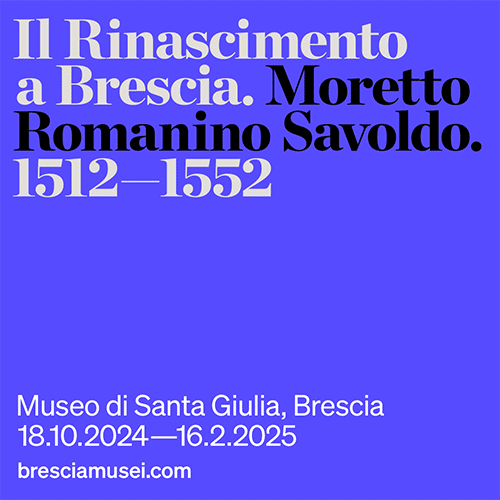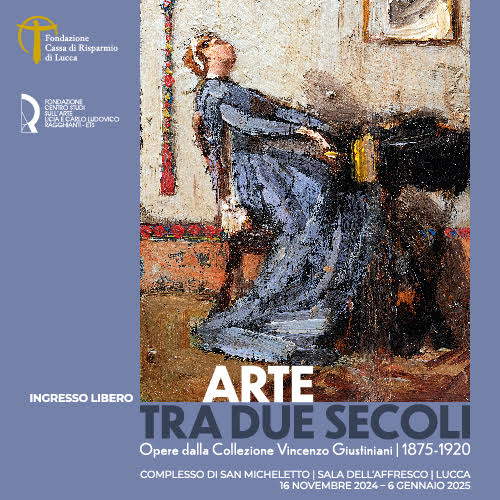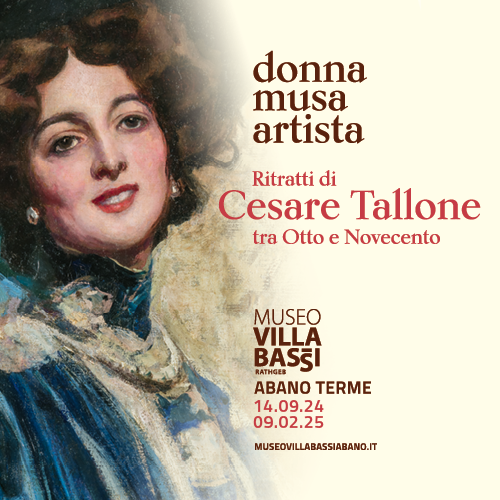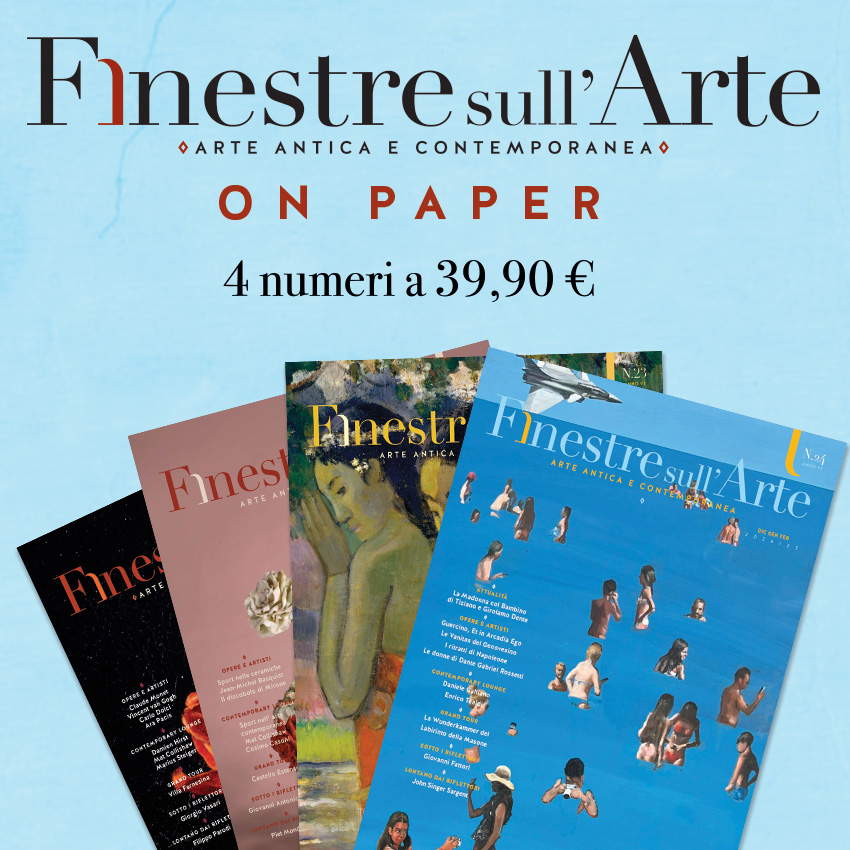Exposing the absent and the uncanny. What Anish Kapoor's exhibition at Palazzo Strozzi looks like.
What role, today, does the audience play in the art world? Hand in hand with the development of hyper-communication and simplification of languages, an increasing number of artists are confronting a redefinition of the roles of exhibition visitors, who are now an active part of the process of activating the work and not just decoding it. If we think of the words of Umberto Eco, who stated that “the viewer intervenes to fill semantic gaps,” it is also true that we are increasingly finding in the public a feeling of dissatisfaction in wandering through the halls of a contemporary art exhibition due to a sectorial lexicon and a split in reference values that, instead, mass mediums, such as social media, manage to synthesize. Unable to find a shared lexicon, the artist began working to meet the public, and although this new accessibility may facilitate an initial approach, special care must be taken to prevent an oversimplification of language from lapsing into conventionality and the public from distancing itself from an art already defined by many as elitist and difficult to understand.
Reflecting on the question posed at the outset, Anish Kapoor’s solo exhibition Untrue Unreal , staged in the rooms of Palazzo Strozzi in Florence and curated by Arturo Galansino, is an exhibition that seems half-successful and can be summed up through three key elements: awe, plasticity, and the blackest blackness of all. The path of the exhibition is divided into eight rooms and features historical and recently produced works that dialogue with the architecture of the palace and the public. Past the entrance, Void Pavillion VII, a new work specifically conceived for the courtyard of Palazzo Strozzi and realized thanks to the support of the Hillary Merkus Recordati Foundation, stands out in the center of the courtyard: recalling Kazimir MaleviÄ ’s Black Square , Kapoor’s work stands as a four-dimensional object, with three known dimensions and one unknown, and stands at the same time as a starting point and a landing place in the dialogue between Kapoor’s art and the palace itself. On the main floor, the exhibition kicks off with the iconic work Svayambhu (2007), a Sanskrit term for that which is autonomously generated, a counterpart to the Christian acheropite images not painted by a human hand. The work, a metaphor for birth, stands in dialogue with the other revolutionary and impactful works in the subsequent rooms, such as Endless Column, a monumental column in red pigment, and Non-Object Black (2015), featuring the use of Vantablack, a highly innovative material capable of absorbing more than 99.9 percent of visible light.
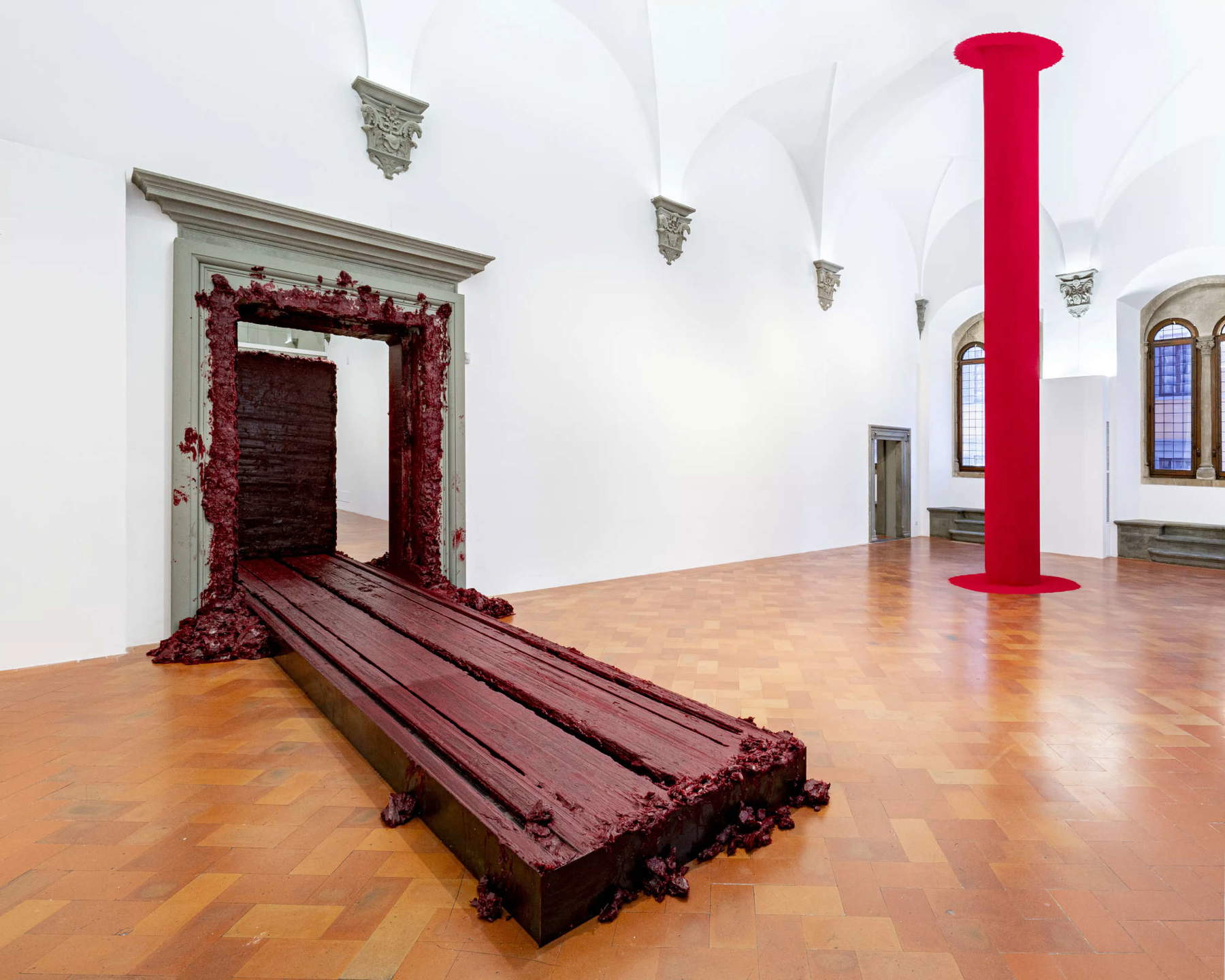

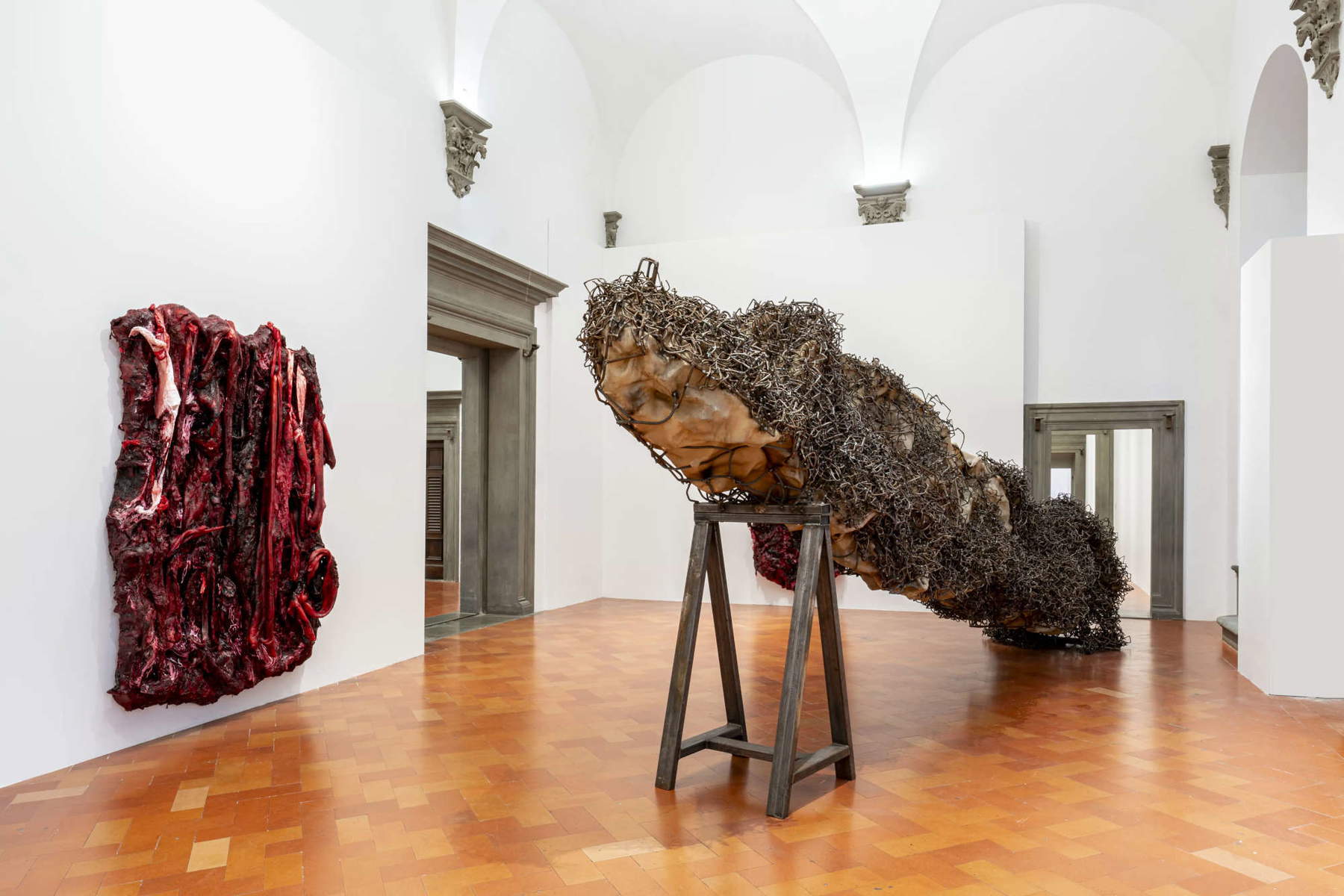
One cannot help but be fascinated and, at times, bewildered by works such as A Blackish Fluid Excavation (2018), a large steel and resin sculpture that, with its imposing mass and plasticity, evokes all the erotic tension of a sexual organ. Also featured is To Reflect an Intimate Part of the Red (1981), one of Kapoor’s most significant and evocative works, characterized by yellow and red pigment forms that emerge from the floor and stand in stark contrast to Vertigo (2006), Mirror (2017) and Newborn (2019), three works, exhibited within theinterior of the hall of mirrors, that both deny and deform space, causing a state of disorientation, indefiniteness and shifting reality. Concluding the exhibition itinerary on the Piano Nobile is the room dedicated to the work Angel (1990), large slate stones covered with layers of deep blue pigment, in reference to the idea of purity.
Anish Kapoor’s large anthological exhibition proposes not only a dialectical reflection between emptiness and matter but also and above all on the immateriality that permeates our world. Red, blue and black become the chromatic fil rouge of the entire exhibition, and it is precisely through a conscious use of their saturation that Kapoor’s research manages to offer a perceptual alteration of reality. It is a representative retrospective of the developments in his artistic journey, with the specific goal of creating immersive spaces that challenge appearances and induce the viewer to seek his own truth through interaction with the works, which acquire a life of their own only when placed in relationship with the exhibition space and the viewer. It is no coincidence that Kapoor claims that “the circle ends only with the viewer.”
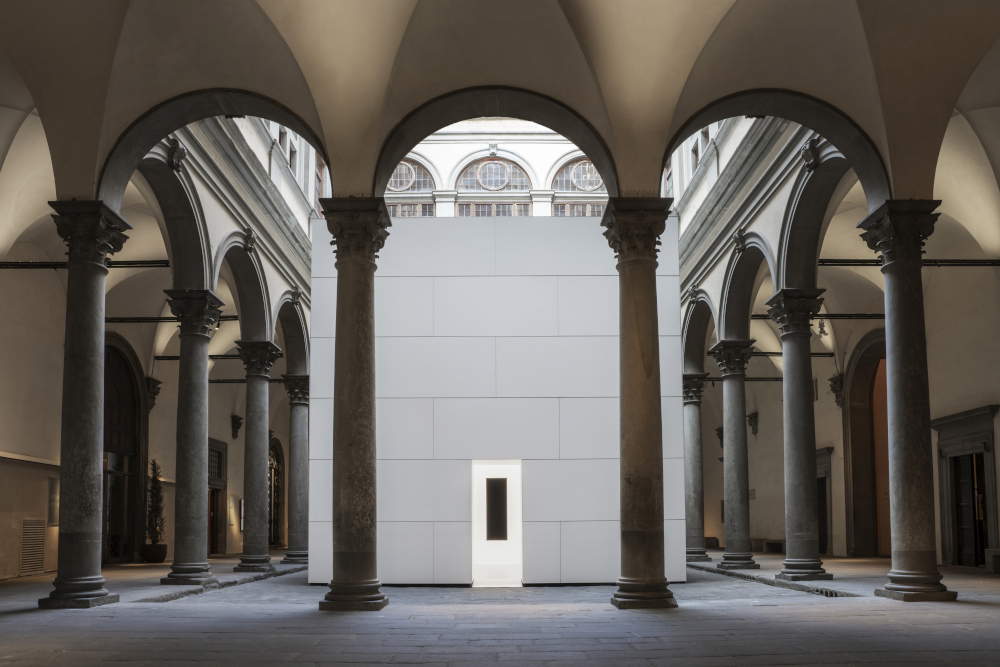
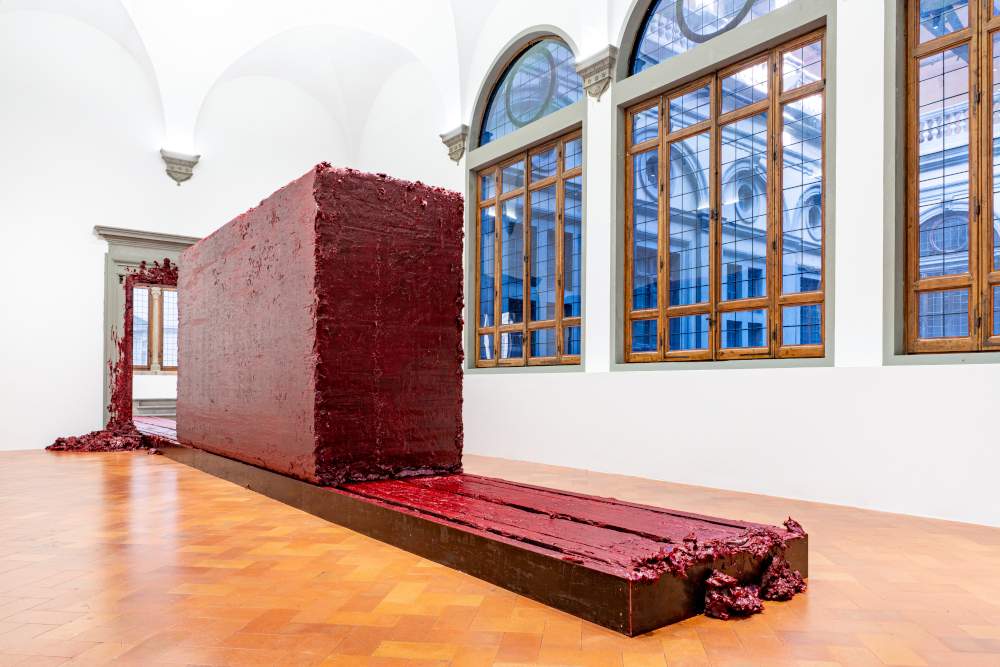
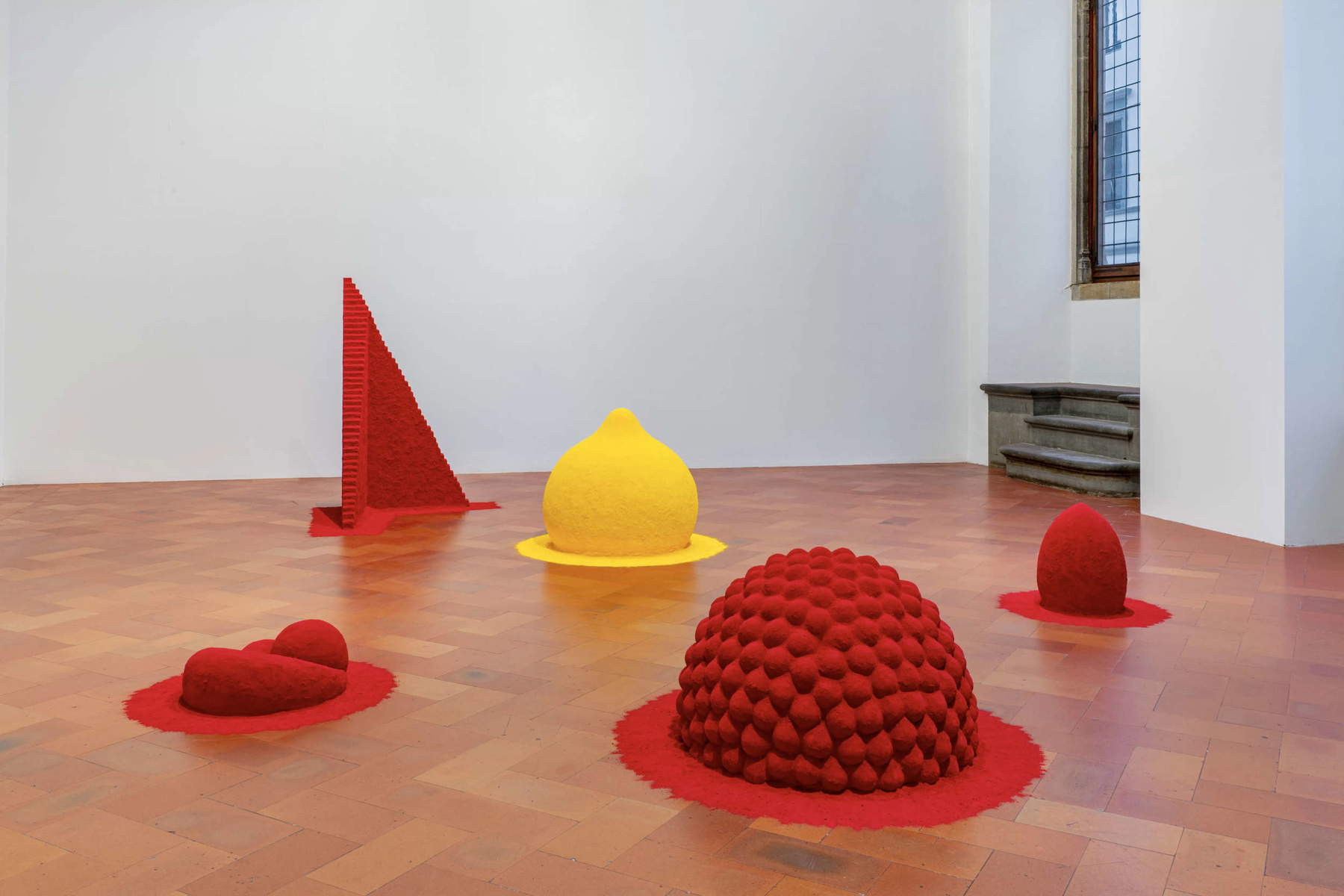
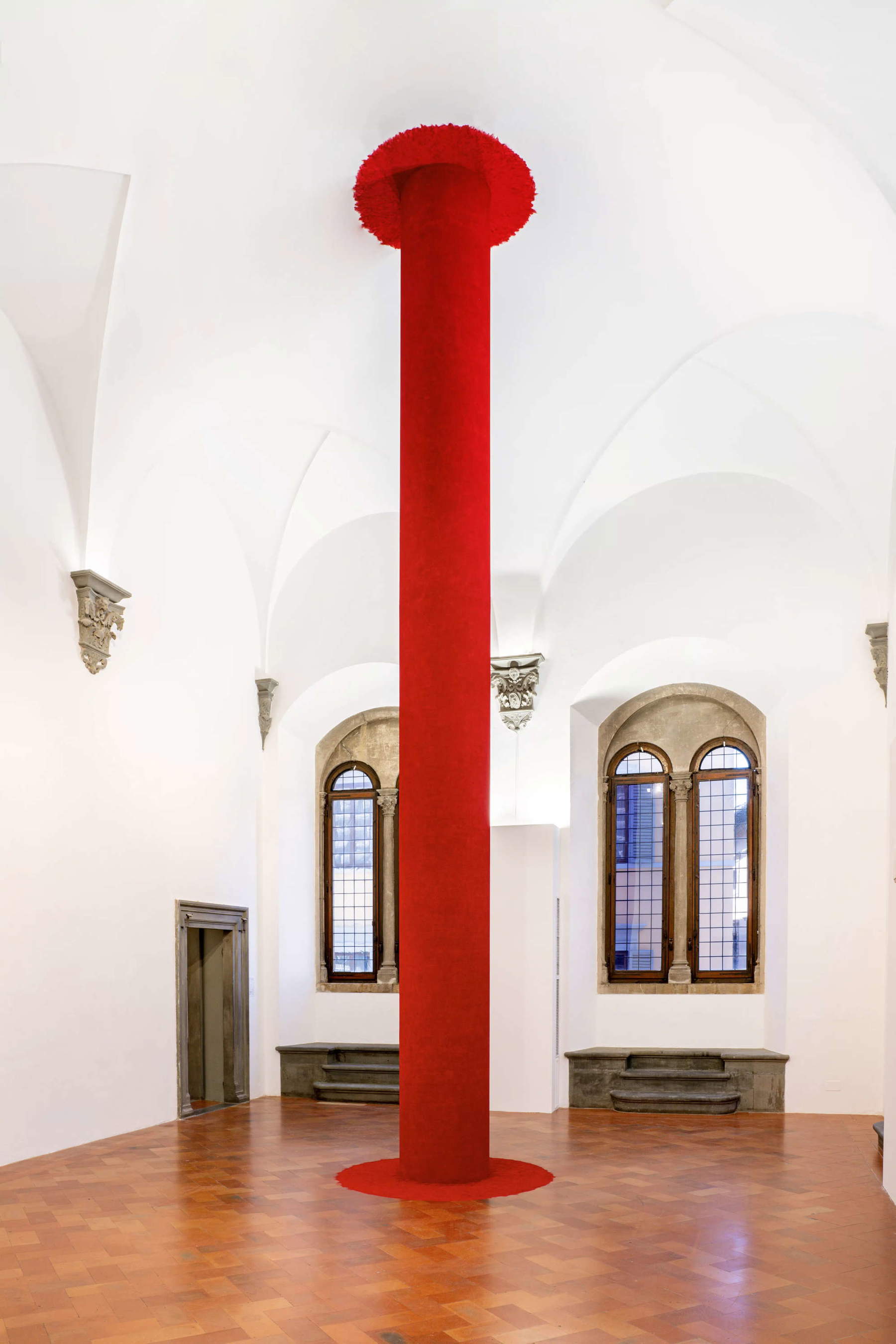
The parallel between Kapoor’s art and the Renaissance architecture of the palace is, without a doubt, the main comparison but, at the same time, the most obvious one. Palazzo Strozzi is symmetrical and rigorous, and making an exhibition within its halls is not easy, if we also keep in mind that the type of exhibition design that prefers a dialogue between the ancient and the contemporary is nowadays an almost mainstream exhibition choice, especially for a reality like Palazzo Strozzi. The clash between the symmetry and rigidity of the rooms and the plasticity of the works give rise to what in this case we might call a "Contemporary Renaissance," a great opposition that indirectly intends to reflect on the dualistic nature of the whole of existence, surrounded by a universe of opposites. As Jung himself wrote in Psychology and Alchemy (1944), “without the experience of opposites there is no experience of wholeness and therefore no inner approach to sacred figures.” The wholeness sought by Kapoor is nothing more than a simple union of polarities, and acting as a glue to the two opposites is undoubtedly color, a true immersive phenomenon endowed with a life of its own, which succeeds in uniting plastic forms with space. The choice of juxtaposing chromatically vivid colors with works that transcend their own materiality succeeds in making this confrontation-clash between his art and the Renaissance palace less trivial.
Anish Kapoor’s exhibition succeeds in breaking the mold, again. Because the more difficult it is to give meaning to a work, the more it will rise to the Olympus of exceptionalism. And if this is combined with a large dose of visual shock, that’s it. The choice of surprising the audience and making it an active element within the confrontation with works of art turns out to be a smart choice and in step with the times, if we consider that the public is increasingly accustomed to a form of communication that prefers an expressive immediacy. Untrue Unreal is an exhibition that does not stand out in originality from this point of view, as it aims, or perhaps the obligation, to amaze, to overcome normality in order to reach the public. Walking through the rooms of the exhibition, one feels almost stunned and overloaded by the breadth of the reflections, the contrasts, the amount of material used, the almost obsessive alternation of the search for effect, all inserted within a studied balance between works and environment, which must never exceed in either case. However, if on the one hand such a choice risks, as is the case for most, to turn the exhibition routes into large entertainment labyrinths, which induce more the search for the perfect selfie than a real reflection, on the other hand immersing oneself in the halls of Palazzo Strozzi means confronting works that are always the same but, at the same time, always different, which eschew any kind of categorization.
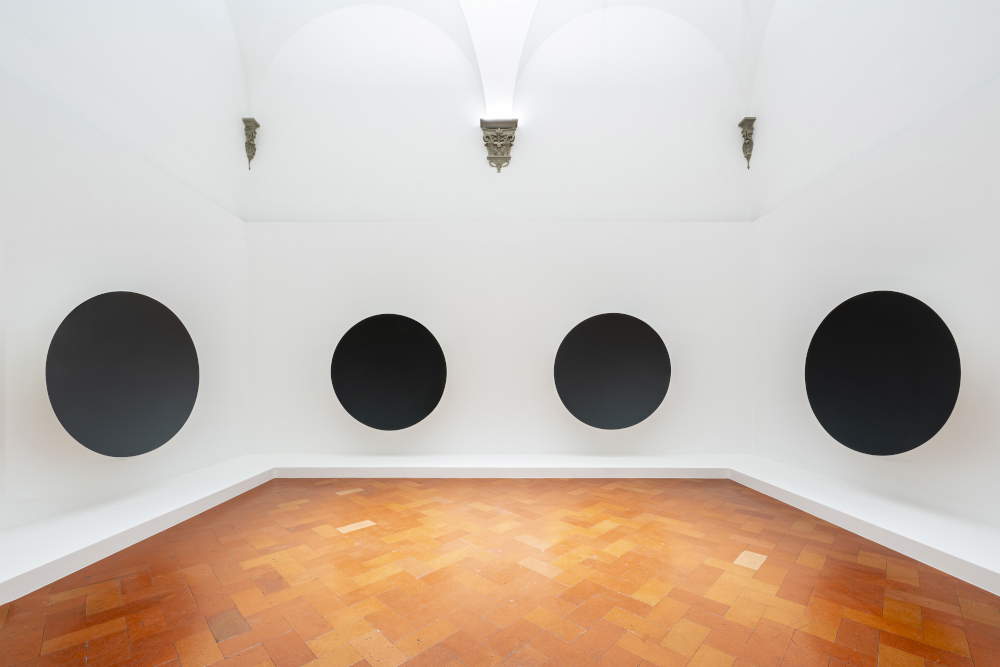
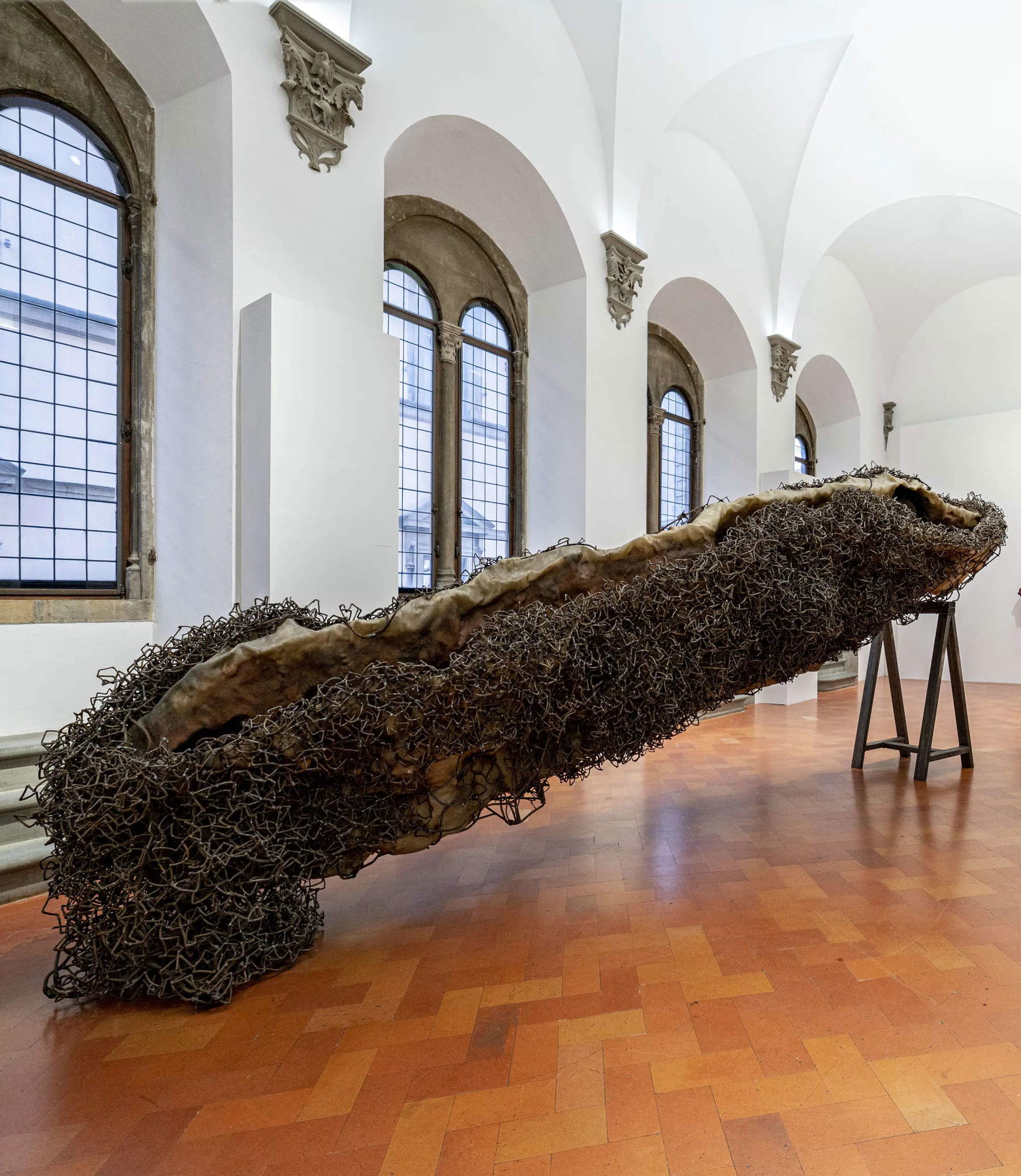
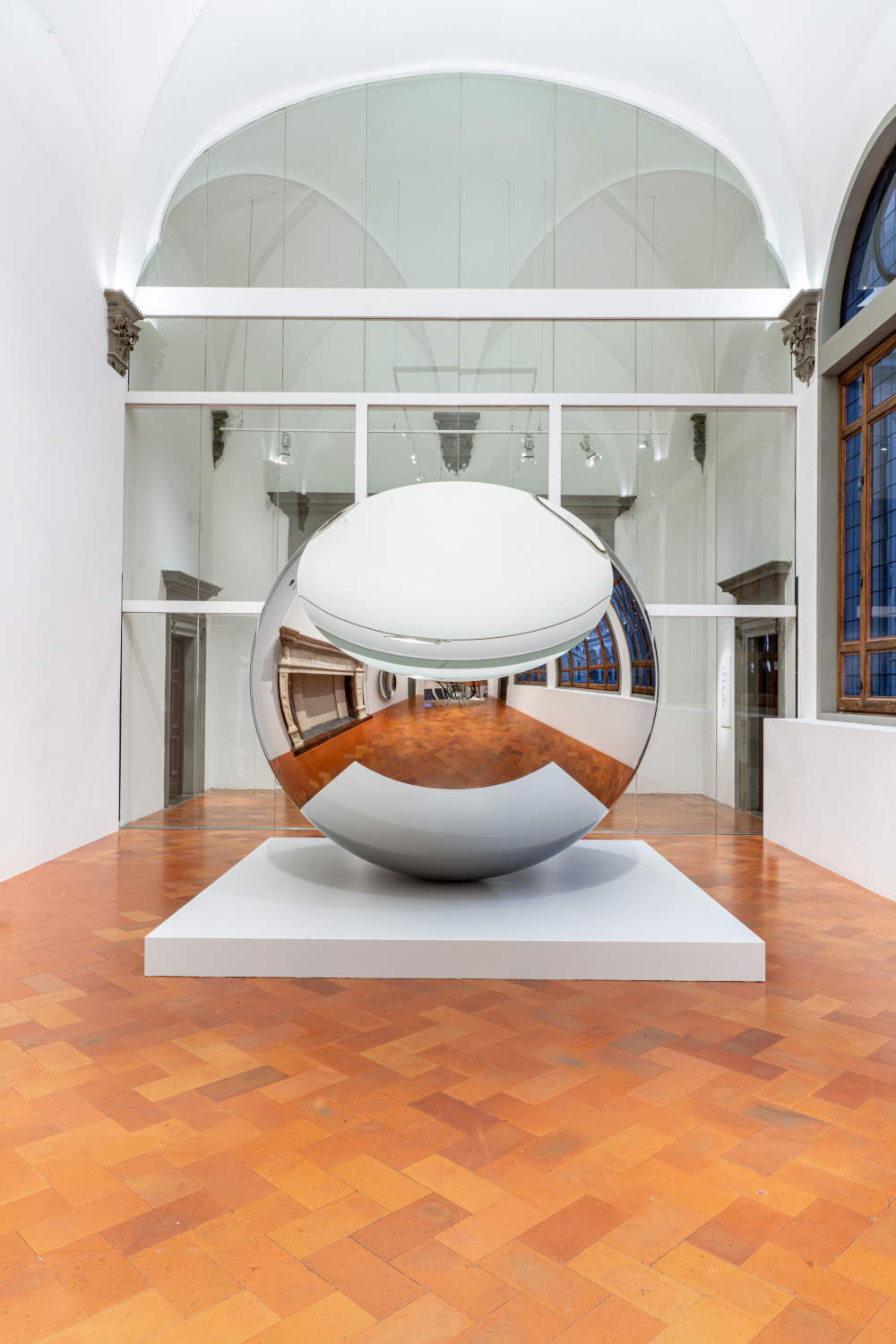
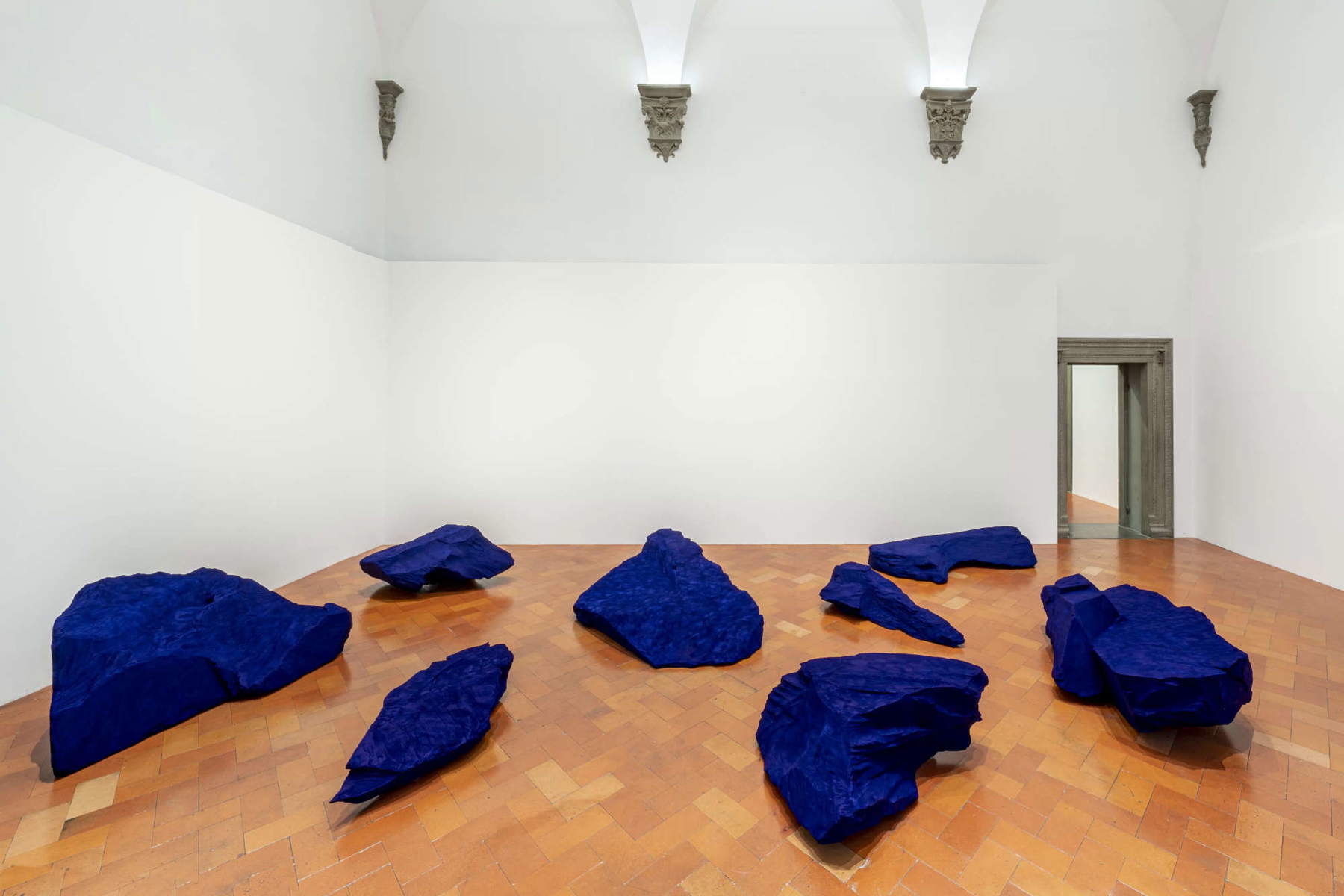
In the continuous readjustment of forms to the viewer’s eyes and the innumerable diversities that result, we can identify a positive element, if we try to go beyond form and project Kapoor’s entire artistic research into current events, where opposites are in constant dialogue and the struggle for freedom, in all its forms, is ever more powerful and fierce. And it is precisely because of this element that Kapoor’s poetics manages to overcome even the most mainstream choices and rise as one of the freest ever.
Although Anish Kapoor has declared in the past, and continues to do so, that he has “nothing to say” with his art, it is precisely this declaration that opens the door to pure freedom of interpretation. What he places before our eyes are liquid works that adapt to the container that houses them and to the vision of each individual viewer, who becomes the trigger that activates the work, which, as it is conceived, exists in a time and space in which the audience exists. In the face of theencounter between the unreal and the improbable, not all works succeed in truly challenging the visitor’s senses; however, it is precisely the choice to dwell theattention to the subject matter of the works, a true union of spirit and flesh, and to use archetypal and precultural images, unencumbered by any preconceptions, to make the exhibition on the whole engaging and interactive, even for the most skeptical viewers distant from the art world.
Palazzo Strozzi becomes an almost mystical place, where opposites coexist and perceptions are challenged. The real is abandoned and the doors are opened to the impossible: pigment, steel, stone, wax and silicone are some of the materials used by the artist, which are manipulated to such an extent as to create a timeless and immaterial dimension. Vantablack is once again confirmed as one of the most curious and ambiguous elements of Kapoor’s entire production, a key component in expanding the almost mystical feeling of the works’ interaction with space and the viewer. A call to sink into the depths of matter, into the meanders of our darkness, remembering to always keep in mind that, as Friedrich Nietzsche wrote, “when you look long into an abyss, the abyss also looks into you.”
Warning: the translation into English of the original Italian article was created using automatic tools. We undertake to review all articles, but we do not guarantee the total absence of inaccuracies in the translation due to the program. You can find the original by clicking on the ITA button. If you find any mistake,please contact us.






